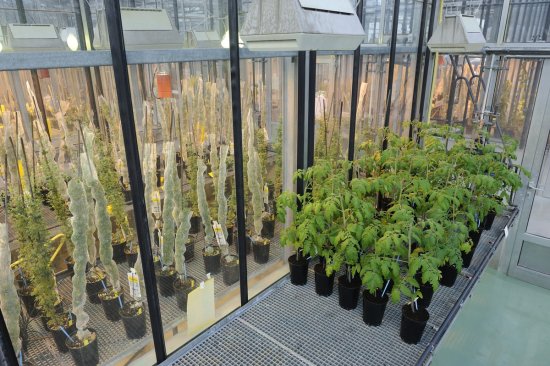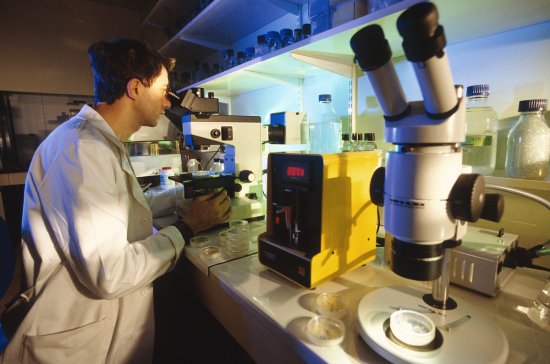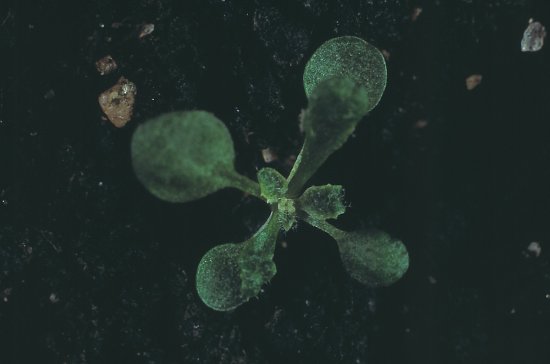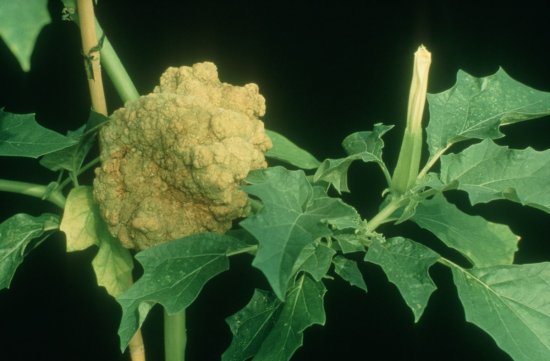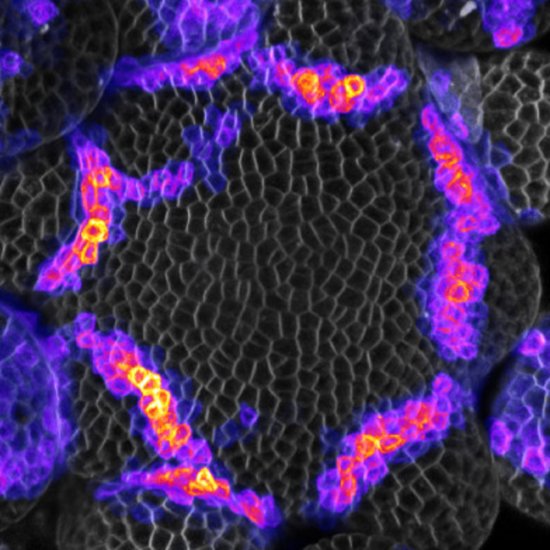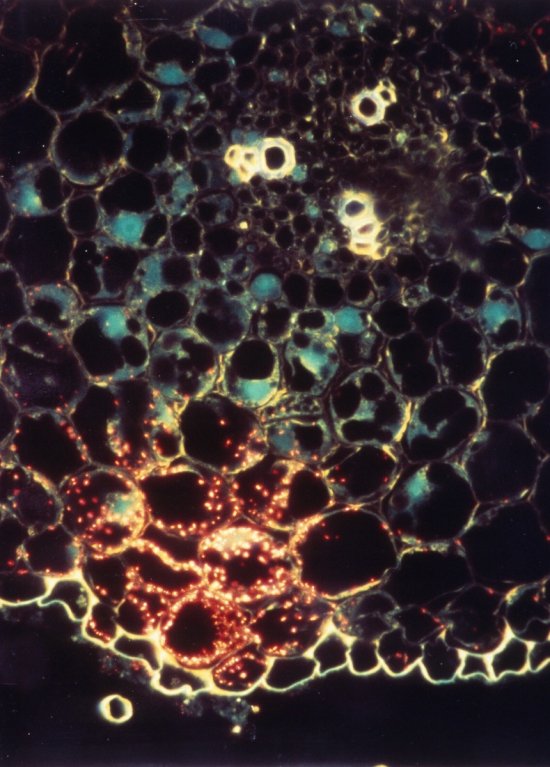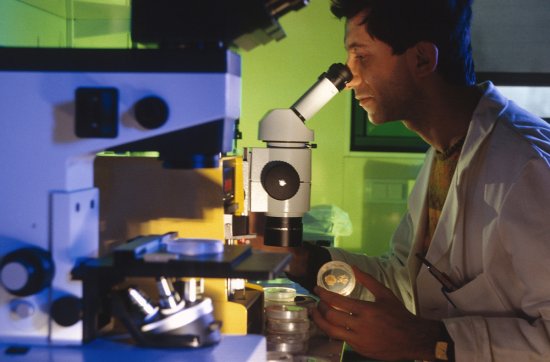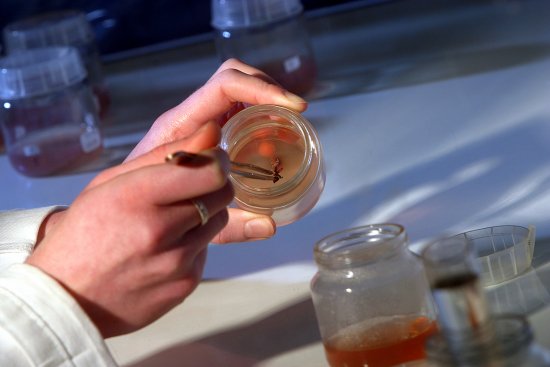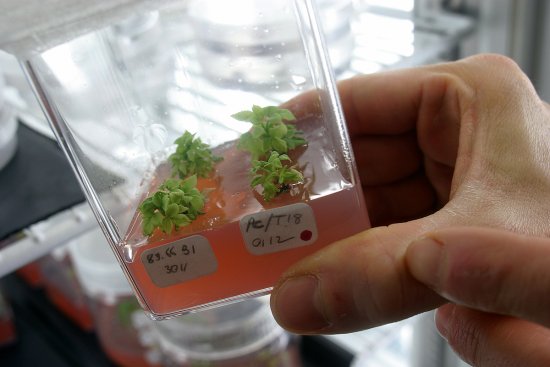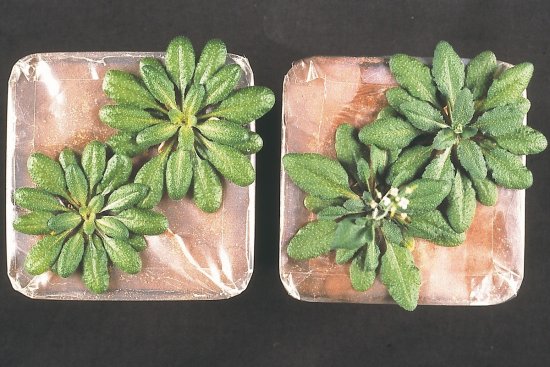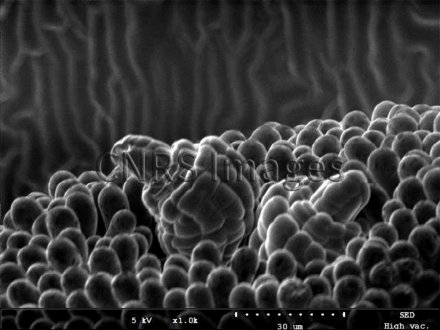
© Françoise MONEGER / RDP / CNRS Images
Reference
20170066_0001
Sommet de l’organe reproducteur femelle d’une Arabette des dames, "Arabidopsis thaliana"
Top of the female reproductive organ of the mouse-ear cress Arabidopsis thaliana, a species of plant, in which the ETTIN gene (which encodes a protein involved in the signalling pathway of a plant growth regulator) has been deactivated, observed using a scanning electron microscope. It is possible to see the stigmatic papillae, which receive the pollen, and, in the middle, two ovules. The deactivation of the gene has caused these ovules to develop outside the ovary. These experiments help us understand how genes govern the reproducibility of flower development. These methods could have applications in agronomy as a way of controlling the morphological characteristics (size and shape) of flowers.
The use of media visible on the CNRS Images Platform can be granted on request. Any reproduction or representation is forbidden without prior authorization from CNRS Images (except for resources under Creative Commons license).
No modification of an image may be made without the prior consent of CNRS Images.
No use of an image for advertising purposes or distribution to a third party may be made without the prior agreement of CNRS Images.
For more information, please consult our general conditions


